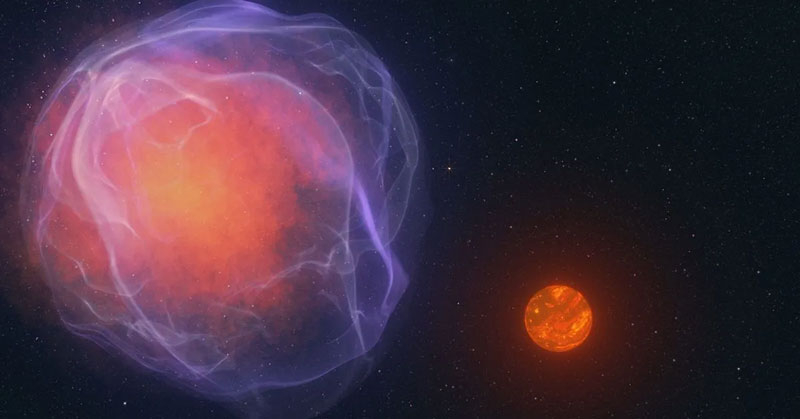As part of NASA’s Backyard Worlds: Planet 9 program, three amateur astronomers discovered a celestial body rushing out of our galaxy. The involvement of professionals made it possible to clarify that this is most likely a brown dwarf flying at an incredible speed of about 1.6 million km/h. This will allow it to overcome the gravity of the galaxy and fly away from the Milky Way, becoming the first object of its kind in the history of observations.

Artist’s rendering of a supernova and brown dwarf pair. Image source: W.M. Keck Observatory/Adam Makarenko
There are two most likely scenarios why the object CWISE J1249 – an ultra-light star or an underdeveloped star in the form of a brown dwarf – was able to accelerate to supergalactic speeds. According to one assumption, it could be paired with a white dwarf, which went supernova and the energy of its explosion gave its partner in the system additional acceleration. Another possibility is that CWISE J1249 comes from a dense globular cluster, where it happened to fly in the gravitational zone of one or two black holes. Scientists are not yet ready to make a definitive statement about how the object CWISE J1249 came to such a life, but they promise to continue observing.
In the Backyard Worlds: Planet 9 project, amateurs discovered over 4,000 brown dwarfs – dim objects that never became full-fledged stars. Their masses were not enough to launch full-fledged self-sustaining thermonuclear reactions. They are dark and relatively cool, so they are best detected in the infrared. According to NASA’s proposal, amateurs are sifting through data collected by NASA’s WISE mission in search of both brown dwarfs and the mythical ninth planet in our system, as well as other interesting objects.
The discovery of an ultra-fast object was a once in a million event – unexpected and exciting. Three citizen scientists who independently discovered this object in WISE data co-authored a scientific paper on the discovery.
We add that NASA’s WISE infrared telescope was permanently turned off on August 8, 2024. Towards the end of this year or at the beginning of next, it will enter the dense layers of the Earth’s atmosphere and burn up, but the data it collected will continue to bring scientific discoveries, which will become a kind of monument to this scientific mission.